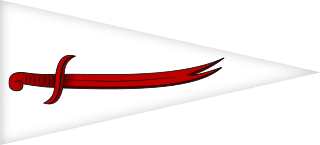 W
WMalta was ruled by the Order of Saint John as a vassal state of the Kingdom of Sicily from 1530 to 1798. The islands of Malta and Gozo, as well as the city of Tripoli in modern Libya, were granted to the Order by Spanish Emperor Charles V in 1530, following the loss of Rhodes. The Ottoman Empire managed to capture Tripoli from the Order in 1551, but an attempt to take Malta in 1565 failed.
 W
WPersia sustained maritime forces during Afsharid dynasty that were revived in 1734 by Nader Shah, with peak of its activity lasting more than a decade until Division of the Afsharid Empire.
 W
WGalley tactics were the dominant form of naval tactics used from antiquity to the late 16th century when sailing ships began to replace oared ships as the principal form of warships. Throughout antiquity and the Middle Ages until the 16th century, the weapons relied on were the ship itself, used as a battering ram or to sink the opponent with naval rams, the mêlée weapons of the crew, missile weapons such as bolts from heavy crossbows fixed on the bulwarks, bows and arrows, weights dropped from a yard or pole rigged out, and the various means of setting an enemy alight. The latter could be done by shooting arrows with burning tow or by Greek fire ejected through specially designed siphons.
 W
WA letter of marque and reprisal was a government license in the Age of Sail that authorized a private person, known as a privateer or corsair, to attack and capture vessels of a nation at war with the issuer. Once captured, the privateers could then bring the case of that prize before their own admiralty court for condemnation and transfer of ownership to the privateer. A letter of marque and reprisal would include permission to cross an international border to conduct a reprisal and was authorized by an issuing jurisdiction to conduct reprisal operations outside its borders.
 W
WIn naval warfare, the line of battle is a tactic in which a naval fleet of ships forms a line end to end. Its first use is disputed, variously claimed for dates ranging from 1502 to 1652, with line-of-battle tactics in widespread use by 1675.
 W
WNaval artillery in the Age of Sail encompasses the period of roughly 1571–1862: when large, sail-powered wooden naval warships dominated the high seas, mounting a bewildering variety of different types and sizes of cannon as their main armament. By modern standards, these cannon were extremely inefficient, difficult to load, and short ranged. These characteristics, along with the handling and seamanship of the ships that mounted them, defined the environment in which the naval tactics in the Age of Sail developed.
 W
WSailing ship tactics were the naval tactics employed by sailing ships in contrast to galley tactics employed by oared vessels. This article focuses on the period from c. 1500 to the mid-19th century, when sailing warships were replaced with steam-powered ironclads.
 W
WThe navy of the Order of Saint John, also known as the Maltese Navy after 1530, was the first navy of a chivalric order. It was established in the Middle Ages, around the late 12th century. The navy reached its peak in the 1680s, during the reign of Grand Master Gregorio Carafa. It was disbanded following the French invasion of Malta in 1798, and its ships were taken over by the French Navy.
 W
WThe Fourth Ottoman–Venetian War, also known as the War of Cyprus was fought between 1570 and 1573. It was waged between the Ottoman Empire and the Republic of Venice, the latter joined by the Holy League, a coalition of Christian states formed under the auspices of the Pope, which included Spain, the Republic of Genoa, the Duchy of Savoy, the Knights Hospitaller, the Grand Duchy of Tuscany, and other Italian states.
 W
WThe Papal Navy was the maritime force of the Papal States. Loosely construed, it was in sporadic existence from approximately the Battle of Ostia (849) during the pontificate of Leo IV until the ascension of Pope Leo XIII in 1878.
 W
WDuring the Spanish colonization of the Americas, the Spanish Main was the collective term for the parts of the Spanish Empire that were on the mainland of the Americas and had coastlines on the Caribbean Sea or Gulf of Mexico. The term was used to distinguish those regions from the numerous islands Spain controlled in the Caribbean, which were known as the Spanish West Indies.